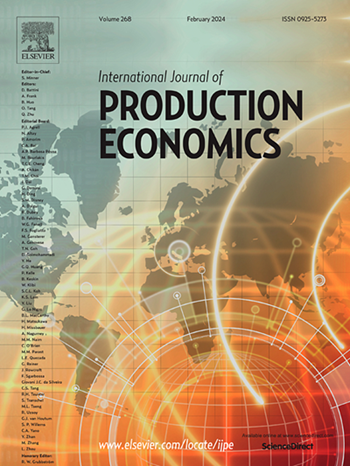Symmetric or asymmetric? Value-added service design for new and remanufactured products under competition
IF 10
1区 工程技术
Q1 ENGINEERING, INDUSTRIAL
引用次数: 0
Abstract
Remanufactured products, although seen as pro-environmental alternatives to new ones, may evoke consumer skepticism regarding quality. Value-added service provided to customers after purchase can efficiently alleviate this concern and inspire consumption. However, the inherent competition between new and remanufactured products in price and service raises a vital question on who should provide value-added services, and at what modes, in a supply chain. Using game-theoretic models, we examine four potential service modes: symmetric cases (Scenario M or R), where a manufacturer provides value-added services to both products or delegates the retailer to provide services, and asymmetric cases (Scenario MR or RM), where a manufacturer provides services to remanufactured products, leaving the new ones up to the retailer, or vice versa. We find that asymmetric cases result in the highest and the lowest service qualities; that is, the manufacturer (or the retailer) would provide the poorest (or the highest) service quality when the other party acts as a service competitor. In contrast, symmetric cases result in the highest and the lowest retail prices; that is, product competition stimulates service quality but does not necessarily intensify price competition. Additionally, when the service cost coefficient falls within a certain range, the retailer counterintuitively raises sales prices for both products even when the manufacturer undertakes service costs. Finally, the total revenues under asymmetric cases decrease due to the increased competing effect, whereas Scenario R generates the highest profits for both parties. However, for consumers, the asymmetric cases would be more beneficial.
对称还是不对称?竞争下新产品和再制造产品的增值服务设计
再制造产品虽然被视为环保替代品,但可能会引起消费者对质量的怀疑。为顾客提供购后增值服务,可以有效缓解这种担忧,激发消费。然而,新产品和再制造产品之间在价格和服务方面的内在竞争提出了一个至关重要的问题,即在供应链中由谁提供增值服务,以及以何种模式提供增值服务。使用博弈论模型,我们研究了四种潜在的服务模式:对称情况(场景M或R),制造商为两种产品提供增值服务或委托零售商提供服务;非对称情况(场景MR或RM),制造商为再制造产品提供服务,将新产品留给零售商,反之亦然。我们发现,不对称情况下会导致最高和最低的服务质量;也就是说,当另一方作为服务竞争对手时,制造商(或零售商)将提供最差(或最高)的服务质量。相反,对称的情况导致最高和最低的零售价格;也就是说,产品竞争刺激了服务质量,但并不一定会加剧价格竞争。此外,当服务成本系数在一定范围内时,即使制造商承担了服务成本,零售商也会反直觉地提高两种产品的销售价格。最后,在不对称情况下,由于竞争效应的增加,总收益减少,而情景R对双方的利润最高。然而,对于消费者来说,不对称的情况会更有利。
本文章由计算机程序翻译,如有差异,请以英文原文为准。
求助全文
约1分钟内获得全文
求助全文
来源期刊
CiteScore
21.40
自引率
7.50%
发文量
266
审稿时长
52 days
期刊介绍:
The International Journal of Production Economics focuses on the interface between engineering and management. It covers all aspects of manufacturing and process industries, as well as production in general. The journal is interdisciplinary, considering activities throughout the product life cycle and material flow cycle. It aims to disseminate knowledge for improving industrial practice and strengthening the theoretical base for decision making. The journal serves as a forum for exchanging ideas and presenting new developments in theory and application, combining academic standards with practical value for industrial applications.

 求助内容:
求助内容: 应助结果提醒方式:
应助结果提醒方式:


